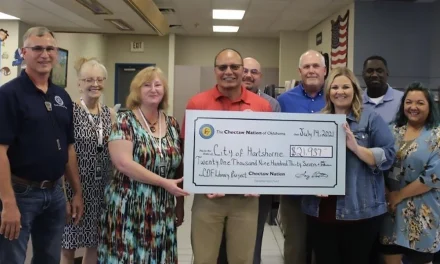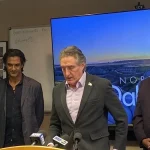For many people, much ambiguity surrounds finances. Lack of financial literacy and education is a major problem nationwide.“People are a little fearful to ask questions. The fact of the matter is, this isn’t being taught in school,” says Mika Leonard (Miami Tribe of Oklahoma), chief operating officer for the Native American Financial Services Association (NAFSA). “If you don’t take it upon yourself, or if you’re not lucky enough to have a mentor or parent or someone in your family teach you some of this [financial literacy] content, then, where would you have learned it?”NAFSA is filling this void with its Digital Financial Literacy Program. The online training is designed to provide easy-to-digest information to help people understand how their finances work and to take control of them.Playlists range from Business 101, which provides tools to build and maintain credit, develop a business plan and more; to a Youth Financial Toolkit, which helps young people navigate the murky waters of banking basics, credit, saving for higher education and more.The playlists cater “to consumers of varying ages and varying stages within the financial sphere,” Leonard says. A 50-second, animated video offers an overview of the financial literacy training program.https://www.youtube.com/watch?v=-MQ5M0_0PVoFinances 101The playlist Finances 101 assists with creating a budget, learning the ins and outs of savings and checking accounts and credit cards, as well as exploring mobile payment options and more.Understanding credit cards and interest rates can be particularly valuable to young adults, Leonard emphasizes. When transitioning from high school to college, or from student to member of the workforce, “all of a sudden, those financial realities hit,” she says.“This is also when people are getting solicitations from credit card companies,” she continues. “They read these pieces of mail that says 0 percent interest; it sounds like a good deal. I think a lot of people get into significant credit card debt opening cards at a young age, not really understanding how to use them.”It’s vital to understand “where credit is derived from, how you build it, and what sorts of things can be risk factors,” Leonard says. “If something happens to your credit, it can take years to climb out of that hole.”Educating consumers on how they can be an active participant in building their credit—“that’s something that will follow you for a lifetime,” Leonard says. “Should you choose to buy a car, buy a home, or start a business, your credit is just so vitally important.”Major DecisionsMeanwhile, the Major Decisions playlist explores buying a house, getting a car loan, refinancing your mortgage, or other significant financial decisions. “It provides a mortgage calculator and helps people to understand how you can even begin to think about what you can afford for a home,” Leonard says.Leonard acknowledges that financial concerns are extremely personal, and NAFSA respects that. “Just like personal medical issues, people are less apt to bring these issues up with their friends or family or colleagues, or they would perhaps feel intimated going into a bank and asking what they might consider to be ‘basic questions.’ We feel like, in those instances, people tend to turn to the internet,” she says.NAFSA hopes to be that online resource.“I think, by putting this online and allowing folks to go at their own pace, we’re hoping that will remove some of those initial barriers, and perhaps that once they get through some of these courses and feel more empowered and feel more informed, maybe that will prompt them to walk into their bank or credit union or financial institution and ask some more in-depth questions,” Leonard says.NAFSA’s Digital Financial Literacy Program aims to bolster confidence and knowledge in one’s own ability to manage finances and to take initiative to do so. Consider each playlist a catalyst to deeper transformation of one’s finances. Afterall, financially literate is a journey.“We really want to empower people,” Leonard adds. “I think one of the first ways you empower people is giving them information.”









